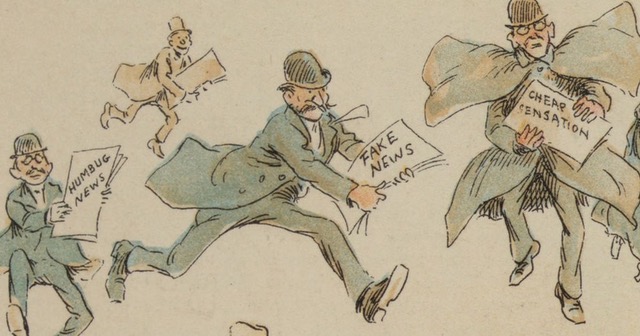Listen to the article
The Dark History of Media Manipulation in America
A wave of deceptive local news websites has swept across the United States over the past decade, with networks like Metric Media operating more than 1,200 sites designed to mimic traditional local newspapers. These operations, dubbed “pink slime journalism” by media watchdogs, represent a digital-age threat to public trust—but as a recent Columbia University Tow Center report reveals, they’re merely the latest chapter in a centuries-old American tradition.
These modern pseudo-news outlets masquerade as community journalism while actually serving political and corporate interests. They exploit public trust in local news by hiding their true funding sources and agendas, using automation and social media targeting to spread content that appears legitimate but lacks journalistic integrity.
Yet while the technology may be new, the tactic of disguising propaganda as news predates the United States itself. The nation’s founding fathers were intimately familiar with media manipulation—often because they practiced it themselves.
Benjamin Franklin, celebrated publisher and revolutionary, created a completely fabricated “Supplement to the Boston Independent Chronicle” in 1782. This counterfeit newspaper described fictitious atrocities allegedly committed by Native Americans allied with British forces. Franklin printed it himself with no connection to the actual Chronicle, designing it to spread anti-British sentiment in Europe.
Thomas Jefferson engaged in similar deception, posing as a “French officer” to publish propaganda in European newspapers. The author of the Declaration of Independence created this false persona to counter what he considered British misinformation about America.
The Civil War era saw journalism reach new depths of fabrication and manipulation. Reporters routinely claimed to witness battles they never attended. In 1864, two New York World reporters published a pamphlet falsely attributed to a northern abolitionist that promoted interracial relationships, attempting to damage Lincoln’s reelection chances by stoking racial fears.
America’s wealthiest citizens have long used media manipulation to advance their agendas. During the “Bank War” of 1828-1832, Nicholas Biddle’s Second Bank of the United States spent massive sums bribing newspaper publishers and reporters to support its rechartering. Henry Ford purchased the Dearborn Independent in 1918, transforming it into a platform for antisemitic conspiracy theories that were distributed through his nationwide dealership network.
Today’s media landscape bears striking similarities to these historical patterns. Conservative networks like Metric Media operate alongside progressive counterparts such as Courier Newsroom, which runs news sites in ten swing states and targets voters with content designed to both inform and persuade. The American Independent manages at least 51 locally-branded news sites in electorally significant locations.
The rise of these partisan news outlets coincides with an unprecedented crisis in local journalism. According to Northwestern University research, about 2.5 American newspapers close every week, creating “news deserts” that are perfect targets for politically and corporately funded pseudo-journalism.
Some proposed solutions to this crisis—government subsidies, billionaire ownership, or corporate funding—carry their own historical baggage of potential influence and control. President Biden’s “Build Back Better” plan proposed $1.67 billion in tax credits for local news outlets, while tech giants like Google and Meta have directed funds toward journalism initiatives.
As Americans navigate this complex media landscape, understanding the long history of manipulation provides crucial context. The digital-age problem of “pink slime journalism” isn’t new—it’s merely the latest iteration of a practice as old as the republic itself, raising fundamental questions about how to preserve independent journalism in a democracy increasingly defined by partisan division and diminishing trust.
Fact Checker
Verify the accuracy of this article using The Disinformation Commission analysis and real-time sources.




9 Comments
This article highlights an important issue that extends beyond the current media landscape. The historical precedent of founders engaging in propaganda disguised as news is a sobering reminder that these challenges are not new. Protecting journalistic integrity remains crucial.
Disguising propaganda as legitimate journalism is a particularly insidious form of media manipulation. It’s troubling to see this practice resurfacing in the digital age, exploiting public trust. Better transparency around funding sources could help address this issue.
I’m curious to learn more about the specific tactics used by these ‘pink slime’ operations to spread their content and target audiences. Understanding their methods could inform efforts to combat this type of media manipulation.
It’s disheartening to see how widespread this problem of ‘pink slime journalism’ has become, with networks operating over 1,200 sites. The public’s trust in local news is clearly being exploited, and that’s deeply concerning. Stronger regulations and oversight seem necessary.
This article provides valuable historical context around the problem of media manipulation. It’s alarming to see how the founders themselves engaged in similar tactics, blurring the line between news and propaganda. Strengthening journalistic integrity will be crucial going forward.
Interesting history of media manipulation in America. Seems like this ‘pink slime journalism’ is a concerning modern iteration of an age-old tactic. I wonder what can be done to restore public trust in local news sources.
This report on the rise of deceptive local news websites is a wake-up call. Masquerading as community journalism while serving hidden agendas is a serious threat to informed democracy. More transparency and accountability in the media industry is urgently needed.
The rise of ‘pink slime journalism’ is a concerning trend that undermines the credibility of local news. Masquerading as community journalism while serving political and corporate interests is a deceptive practice that erodes public trust. More oversight and accountability are needed.
Agreed. Increased transparency around funding sources and editorial processes could help distinguish legitimate local news from manipulative pseudo-news outlets.